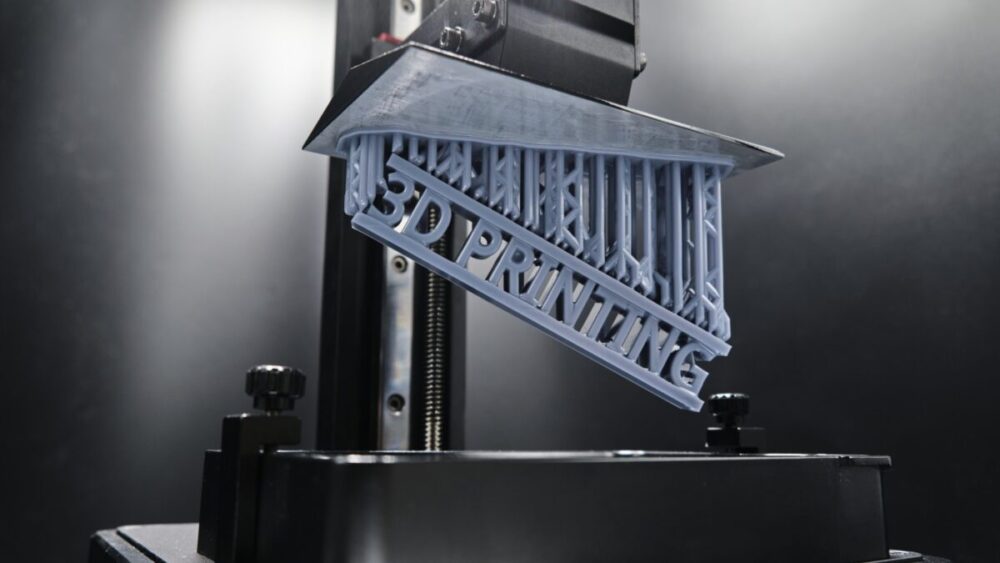If you’re a 3D printing enthusiast interested in the basics and biochemistry of 3D printing, this post is for you. We delve into the inner workings of resin 3D printers, the cutting-edge process used to create complex, detailed prototypes and models with layer-by-layer precision. We explore why this form of 3D printing is gaining popularity with 3D printing aficionados, look at how the process works, and cover what you need to jump into the wild world of resin 3D printing. So read on, and break through the surface of 3D printing!
Resin printing sometimes referred to as “stereolithography”, is a type of 3D printing that is done with liquid resins. This resin is cured into solid shapes by means of a controlled laser beam, layer by layer until all of the layers required for the final shape have been created. Not only does it provide high-resolution prints and excellent detail, but it also allows for smooth surfaces and high structural integrity. While this type of printing is more accessible than ever before with the availability of desktop resin printers, the pros of resin 3D printing come at a cost. Namely that the environmentally unfriendly materials and processes involved in producing certain types of prints can be both time-consuming and expensive.
Read about the best wireless printer.
The debate surrounding the use of resin 3D printers often centers around sustainable practices and whether or not they are an appropriate method of production for items that can be reusable or upcycled. On one hand, some argue that this form of 3D printing allows for faster and more precisely detailed parts than many other forms of manufacturing. However, on the other hand, traditional methods such as injection molding remain more efficient as far as material usage and overall waste production are concerned.
Ultimately, each situation should be evaluated based on its individual merits taking into account the desired outcome and final materials used. It’s important that all forms of production are undertaken responsibly, while still leaving room for creativity and innovation within computational design technologies such as resin printing. With that said, it is now time to move forward and explore how exactly these amazing printers work.
How Does a Resin Printer Work?
Resin 3D printing works very differently than traditional Fused Deposition Modeling (FDM) printers. Rather than pushing hot plastic filament through a heated nozzle and extruding it layer-by-layer, resin printers use ultraviolet (UV) light to each layer from a vat filled with photopolymer liquid. This process is often referred to as Stereolithography (SLA), or Digital Light Processing (DLP).
Specifically, the printer’s ultraviolet light source shines down onto the vat of resin held in its frame or tray. A movable mirror projects the light to the correct spot on the bottom of the tank. Wherever it hits becomes solidified. At the same time, a piston or some other mechanism moves the platform up and down as new layers are solidified. To help improve curing, many resin 3D printers now also have optional additional UV lights that shine on parts developing in the tank from the outside.
The difference between FDM and resin 3D printing means that final objects produced with resin materials will have higher quality surface finishes compared with their FDM counterparts–with thinner walls and more delicate features. The downside is that they take longer to print compared to FDM printers because of their slower curing times between layers; however, depending on the application and desired quality, this extra time can be worth it for – or even essential for – certain projects.
Understanding how resin 3D printers work will help you decide whether this technology is right for your project’s needs – then identify which type of system you require and what other settings you need to learn before you apply your knowledge in practice. With that in mind, it’s time to look at the deeper principles behind what makes a layer-by-layer printing process possible.
Layer-by-Layer Printing Process
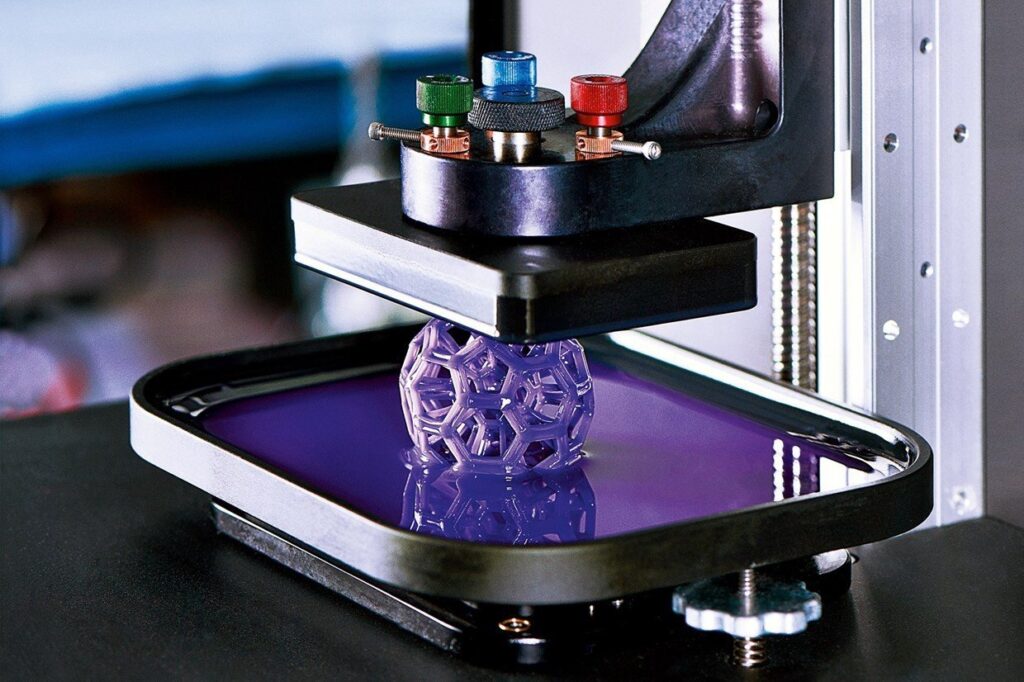
Source: top3dshop.com
Layer-by-layer printing is one of the most important aspects of resin 3D printing and requires in-depth knowledge of the printing process to produce good results. When a resin printer begins work, it starts by depositing photo polymeric resin on a building platform or tray by laying it down in ultra-thin layers. The layers range from 0.05mm to 0.2mm thick, depending on the complexity of the model that needs to be printed. As each layer is laid down, a UV light source will then pass over the surface to solidify the resin in the desired shape.
Layer-by-layer printing has many advantages over traditional 3D printing methods due to the increased accuracy achieved through using ultra-thin layers and curing them with UV light which can provide very accurate resolutions in fine details. This leads to smoother surfaces and less visible layer lines when compared with other methods, such as powder-bed or fused deposition modeling (FDM).
Furthermore, this method of printing can also produce curved shapes much easier than traditional 3D printing methods, creating objects that were not possible before with other methods. On the other hand, some disadvantages of this resin printing method are that it requires more labor-intensive post-processing like washing and curing which takes time and results in higher production costs than other 3D printers. In addition, because of its reliance on ultraviolet light sources, layer-by-layer printing is limited to only certain types of materials including photopolymer resins which may limit its potential uses compared to other printers which can use a wider variety of materials.
Because of these advantages and disadvantages, it is important for individuals considering resin 3D printers to carefully weigh their options and determine if this method is right for their project and application before investing in one. With this knowledge, our next section will look at some materials commonly used in resin 3D printing and discuss their benefits and drawbacks in more detail.
- Resin 3D printing typically uses UV light-curable photopolymer resins to construct a three-dimensional object.
- According to the American Institute of Physics, SLA or stereolithography is the most popular type of resin 3D printing and can print objects with a variety of material properties.
- A study published in 2020 found that the exact temperature at which photopolymer resins cure varies from one material to another, but generally speaking, cure temperatures range from room temperature for some materials and up to 250˚C for others.
Materials Used in Resin Printing
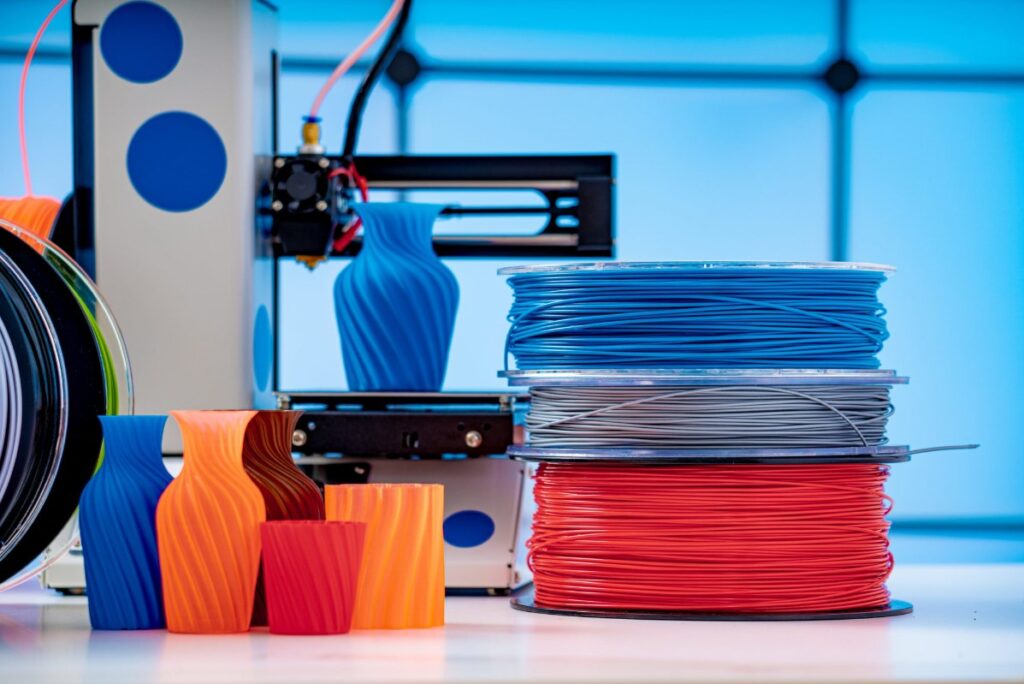
Source: thongguan.com
The materials used in resin 3D printing are often composed of photopolymer resins that contain light-sensitive molecules. During the layer-by-layer printing process, liquid photopolymer resin is exposed to an ultraviolet (UV) light source. This UV light causes the resin to harden into a solid shape. By varying the intensity and duration of the UV light, a range of different material properties can be achieved. The resins commonly used in 3D printing vary widely in terms of hardness, flexibility, thermal stability, and resistance to chemicals and liquids.
Proponents of traditional metallic or plastic materials argue that their longer shelf lives make them more cost-effective than the photopolymer resins used in resin 3D printing. However, those in favor of using photopolymer resins point out that the range of unique properties offered by these materials makes them ideal for specialized applications such as dental implants, jewelry molds and prototype parts for consumer products. Furthermore, these materials are lightweight and easy to work with. They harden when exposed to UV light instead of heat, which greatly reduces energy consumption during production.
Regardless of one’s opinion on the advantages or disadvantages of different 3D printing materials, it is clear that current research is leading to many new advances in both technologies and material selection. As innovations continue to emerge, the possibilities for 3D-printed products will only grow larger. With ever-increasing precision and accuracy across various categories of products and components, designers now have access to an unprecedented level of customization options when it comes to creating objects with 3D printers. Moving forward, understanding how our choices regarding types of resin affect performance will be key for engineers designing these complex prototypes and final products.
Types of Resin
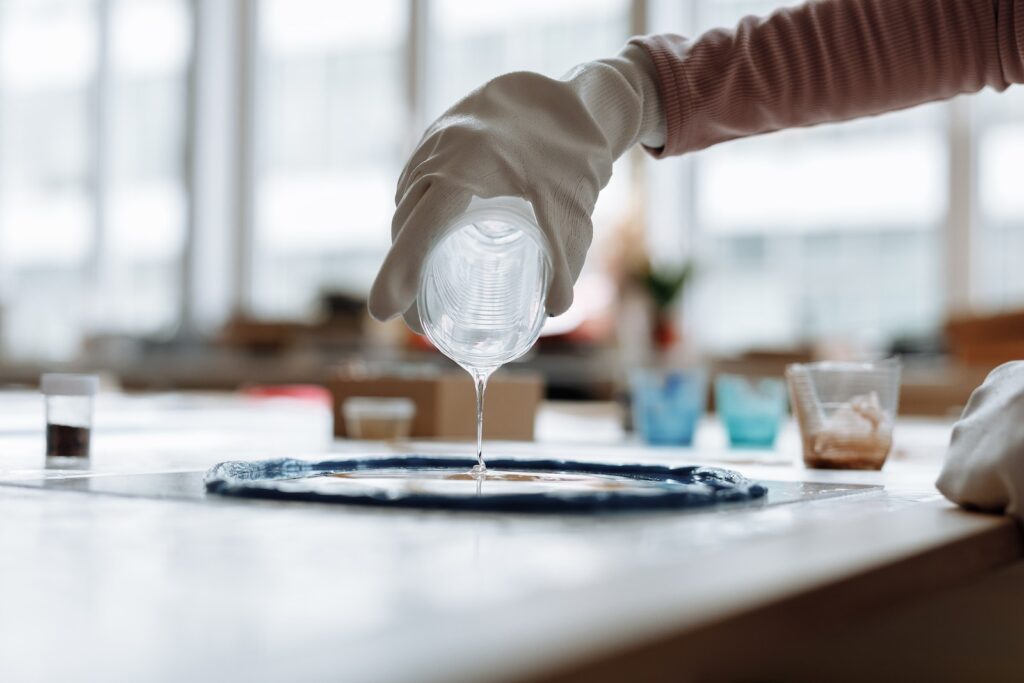
Source: melliescraftbazaar.com
After discussing the materials used in resin printing, it’s now time to turn our attention to the different types of resin available. Generally speaking, there are two major categories of resin – thermoset and thermoplastic. Within these two categories, there exists a variety of specialized resins for 3D printing from flexibles to castable, high-temperature, and dental resins.
Thermoset resin systems begin as liquids but eventually harden after curing with heat or UV light into a solid form. Once set, these resins can’t be re-softened or reformed. Thermoplastic resins offer a much more pliable option as they don’t need to be cured and they can be reheated and reshaped multiple times.
Each type of resin has its own benefits and drawbacks – so, realistically, only through experience will you get to know which resin is most compatible with your printer and the application you need it for. Nevertheless, some categories commonly used by 3D printing enthusiasts include polyurethane (PU), epoxy-based resins, polyamide, and polyester. Silicone-based resins are also increasingly popular among those wanting to print highly detailed parts with intricate designs.No matter which type of resin is best for your project, it’s important that you study each material’s characteristics in order to get the most out of it. Now that we’ve discussed the various types of resins available for 3D printing, let’s explore the different types of printers on the market that use them.
The Different Types of Resin Printers
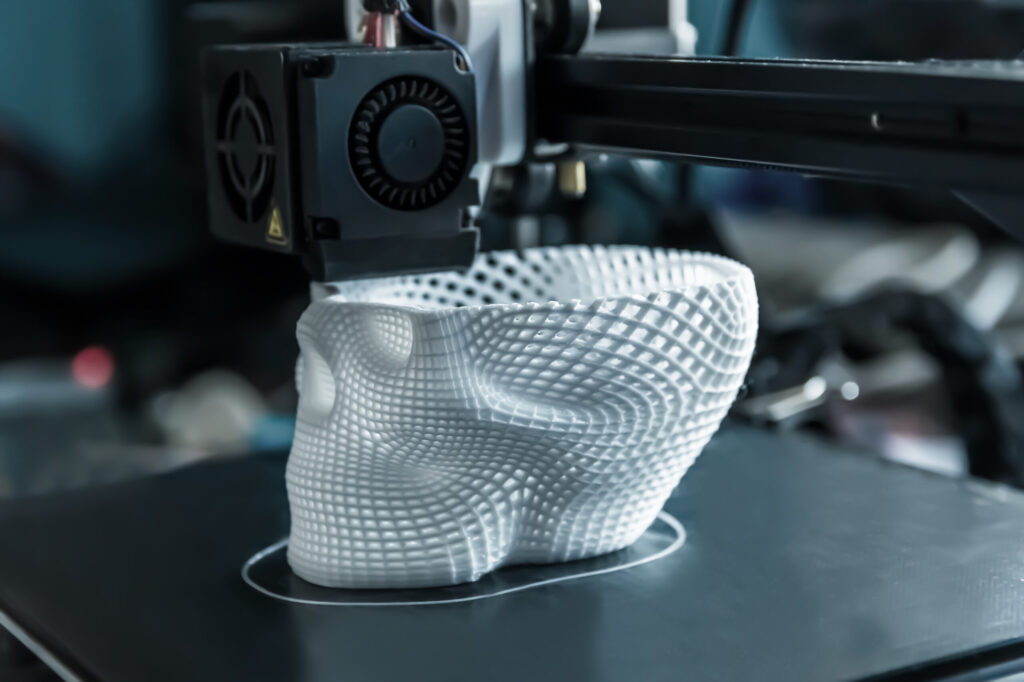
Source: history-computer.com
When it comes to resin 3D printers, there are numerous options to choose from. Each type of printer has its own design and set of features that make it unique in comparison to the others. Traditional SLA printers work by using UV light to quickly cure a layer of liquid resin, while DLP printers typically use a projector to cure a thicker layer at once. Multi-Jet Imaging (MJI) printers use an array of projectors to create complex objects with extremely high resolution.
As each type of printer can offer different benefits and drawbacks, it is important to evaluate which one will be best suited for specific projects or applications.SLA printers are typically smaller and more affordable than their counterparts, making them the perfect choice for hobbyists and casual users who do not require intricate detailing or bulk production. They also create prints with less visible finish lines and more detailed surfaces.
On the other hand, DLP and MJI printers are more expensive but can print with greater accuracy and detail, as well as larger volumes. They also have considerably faster printing times compared to SLA systems.
Overall, there is no one-size-fits-all when it comes to resin 3D printing. Instead, the most suitable machine for any given application must be determined on a case-by-case basis. By becoming familiar with the strengths and weaknesses of each type of printer, users can make an informed decision on which will produce the best results for their needs. With this knowledge in hand, they will be equipped to make the most out of their chosen tool and create amazing 3D prints with ease.
Regardless of how complex or simple a 3D project may be, understanding how computerized machines interact with materials can help take printing projects to the next level. It is clear that science, technology, and art form a powerful combination when harnessed together – and with the right approach – incredible creations can be made in no time!
Computerized Machines and Material Combinations

Source: hp.com
The different types of resin 3D printers generally share the same basic components and processes. However, one major difference among them is their level of sophistication. Some are simple single-material systems while others have a wider range of technologies and materials available. Computerized machines offer more variety in terms of print quality and material combinations.
Computerized machines are equipped with motors and sensors that measure temperatures, speeds, positions, and other factors more accurately than manual machines. This enables them to generate higher-resolution models with greater dimensional accuracy. Additionally, advanced voltage monitors ensure uniform light exposure for faster output with smoother surfaces. Furthermore, some computer-controlled systems may even be able to support a host of different material combinations from polymers to ceramics.
With greater control over the printing process, these more complex machines can also offer greater speed by automatically transitioning between different levels of scanning and exposure during the printing process as compared to manual systems which require an operator to handle every step of the process. This allows for faster throughput and shorter lead times for higher production volumes—something traditional mass production processes often cannot achieve.
When it comes to industrial use, computerized resin 3D printers offer unparalleled versatility when it comes to material optimization and cost-effectiveness. By having a better command over the environment and being able to preload materials into the printer before a job is started, new applications emerge that would previously have been impossible or too slow to accomplish on conventional manufacturing equipment.
Computerized resin 3D printers bring great advantages in terms of both speed and quality when compared to their manual counterparts. As technological advancement continues to increase their capabilities, these machines are becoming increasingly popular for commercial uses ranging from fashion to medical applications. This trend will continue as users look for ways to reduce costs while still achieving a high level of accuracy and detail on their prints. With all this in mind, let’s take a look at some of the benefits resin 3D printing can offer users interested in taking advantage of this new technology.
Benefits of Using Resin Printers
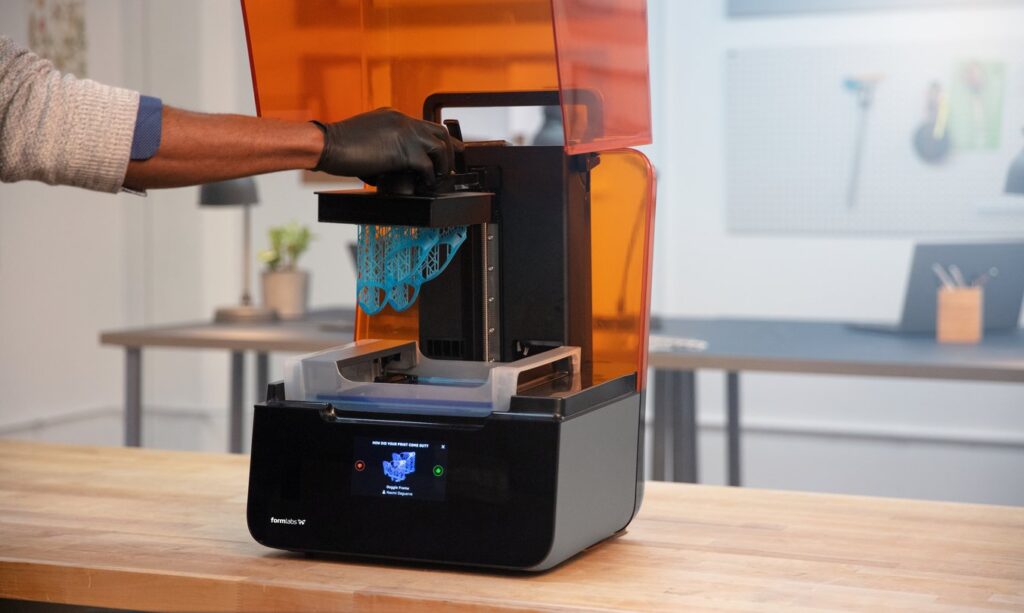
Source: formlabs.com
The benefits of using resin 3D printers for various applications are numerous. From rapid prototyping to decorations, this technology has revolutionized the way businesses and individuals create parts, products, and decorations.
One of the primary advantages of resin 3D printing is its ability to create detailed objects quickly and with minimal waste. Unlike other 3D printing technologies that require layers to be built up slowly, resin 3D printing can produce very intricate objects near-instantly with no need for support structures. This level of intricate detail is ideal for producing jewelry or dental implants, which have many fine features that require precision in manufacturing. The lack of support also reduces the time needed to complete a project and allows complex shapes to be produced without additional steps or post-processing.
Another benefit of using resin 3D printers is their versatility in terms of material types available. Resin 3D printers can print in several different materials such as ABS, Nylon, PETG, SLA/photopolymers, PEEK/polyether ether ketone, and even carbon fiber-filled resins. Each type of material offers unique characteristics for a variety of applications and can provide the best solution for specific projects. For example, ABS offers strength and heat resistance while other materials may offer flexibility or transparency.
Additionally, resin 3D printers boast a low operational cost compared to other additive manufacturing technologies. This makes them an attractive option for businesses or individuals on a budget as they require only minimal capital investments as well as ongoing maintenance costs that are lower than those associated with other 3D printing technologies. Furthermore, thanks to ever-expanding research and development into new resins, the cost of materials such as photopolymers is becoming increasingly affordable.
Finally, some users may appreciate the fact that resin 3D printing produces relatively little noise compared to other types of additive manufacturing equipment such as fused filament fabrication (FFF) printers. FFF machines are typically perceived as causing more disruption with their loud mechanical movements and higher power requirements. Therefore, this could be beneficial in office settings where multiple people are present at once or when working from home during regular hours where noise pollution might be an issue for others living close by.
In summary, there are many benefits associated with using resin 3D printers including fast creation time with precision details; versatility in terms of material types available; low operational cost; and low noise levels when compared to other types of additive manufacturing equipment.
Common Questions Explained
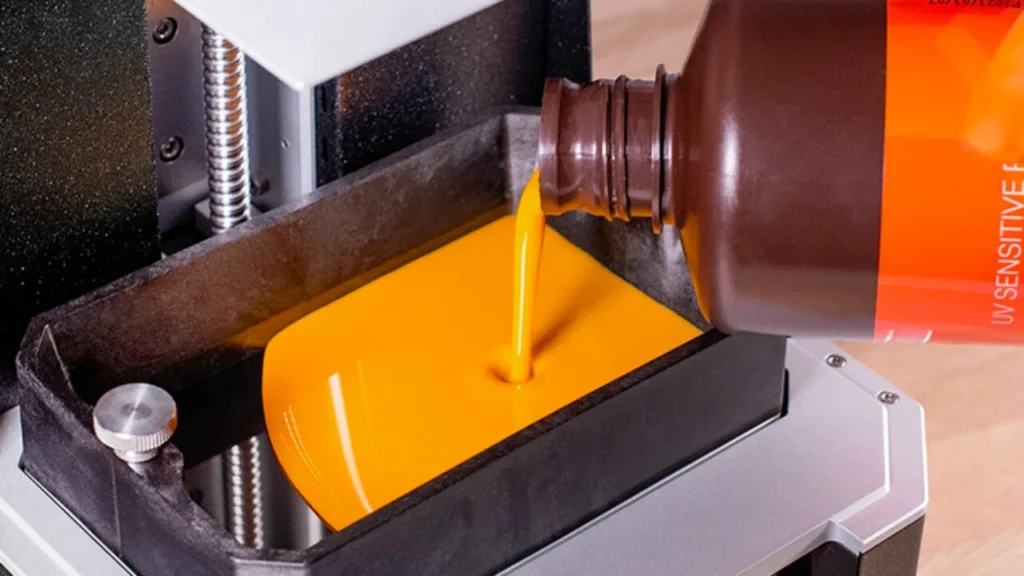
Source: 3dnatives.com
What is the process for creating a 3D print with a resin printer?
Creating a 3D print with a resin printer involves several key steps. First, a model is created in 3D modeling software such as CAD (Computer Aided Design) or 3D sculpting software. The model is then sliced into layers and translated into instructions that the resin printer understands. The instructions are sent to the printer, which will then build the object layer by layer according to the instructions given.
The resin used in resin 3D printing has to be cured with light during each layer-building process. This curing process hardens the liquid resin so that the next layer can be created on top of it. After each layer has been cured, the build platform lowers and the printed object’s height increases until it is completed.
At this point, once the object has been printed, some post-processing is usually necessary such as removing extra support material and smoothing out any imperfections. Once these tasks are completed, you can enjoy your newly printed 3D object!
What are the main components of a resin 3D printer?
The main components of a resin 3D printer are a print platform, build platform, light source, printing software, and vat filled with liquid photopolymer. The print platform holds the 3D object being printed in place and is typically made up of the build platform and a layer of film or plastic. The build platform is a flat surface where layers of the 3D object are printed over time. It is usually made out of stainless steel covered with FEP (fluorinated ethylene propylene) film or a sheet of PEI (polyetherimide).
The light source cures the resin, allowing it to be solidified during printing. All resin 3D printers use some form of LED technology to project UV light onto the print surface which causes the resin to polymerize into its desired shape.
Finally, having the right software is key to getting good prints with any 3D printer. For resin 3D printers, there are several software options available that allow you to control settings like layer time and exposure throughout the printing process. By fine-tuning these settings you can ensure you’re getting higher-quality prints with every print job.
In addition to these essential elements, most resin 3D printers also have other parts including an LCD screen for controlling printer settings and a computerized system for controlling printing operations. Other components like cooling fans, which help lower temperatures during long prints, may also be included.
What type of materials can be used with a resin 3D printer?
The type of materials that can be used with a resin 3D printer are typically photo-curable liquid resins, which harden when exposed to light. These resins come in a variety of colors, as well as hardness grades, allowing you to customize your prints according to the desired application. Common materials include Rigid Resin, Flexible Resin, High Temp Resin, and Castable Resin. Each type of material has different properties that make it suitable for certain applications.
For example, Rigid Resin is ideal for highly detailed and intricate models since it offers excellent layer adhesion and high-resolution printing capabilities. Flexible Resin is great for producing elastic parts and components, while High Temp Resin is well suited for creating heat-resistant parts. Finally, Castable Resin is perfect for making durable and accurate castings that are ready to use without the need for post-processing steps.

